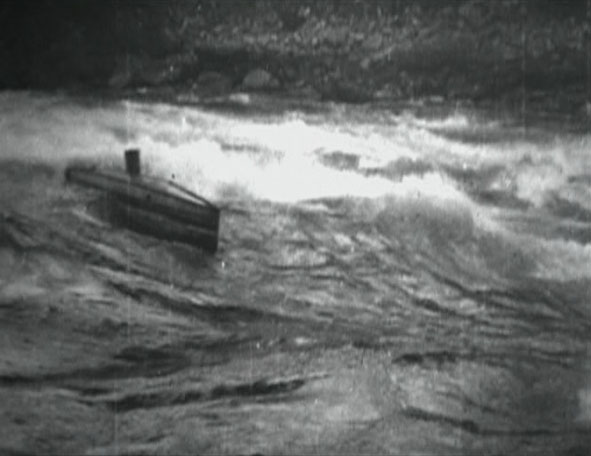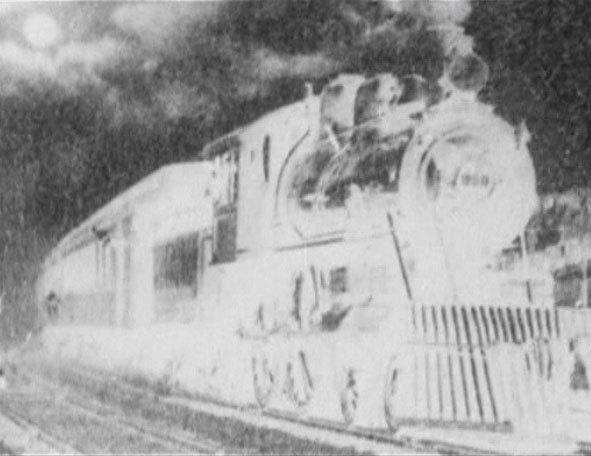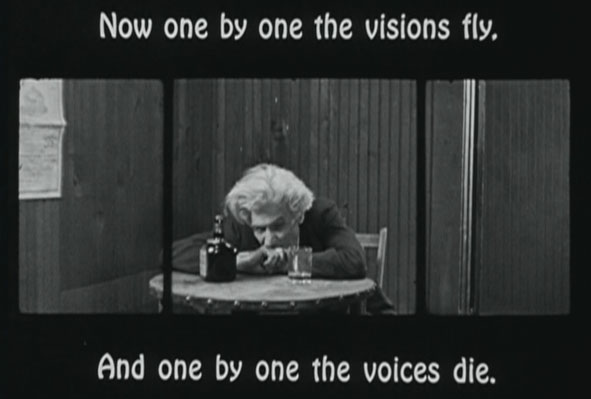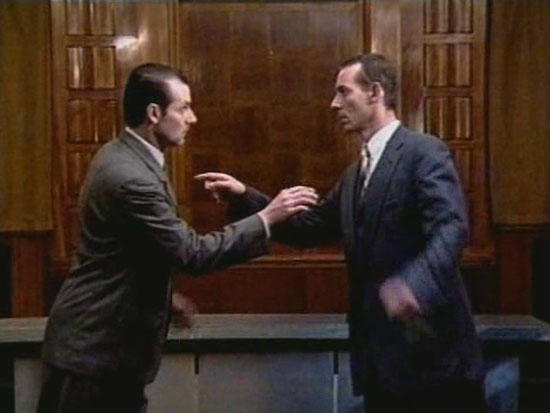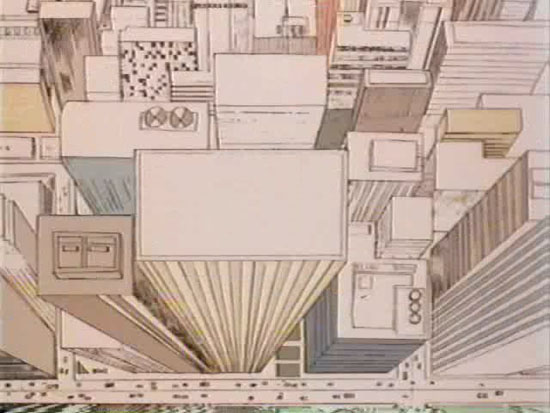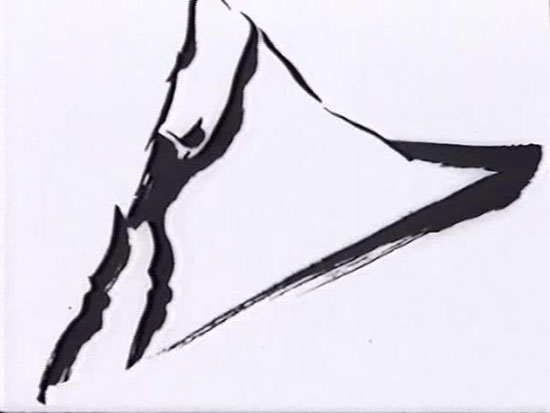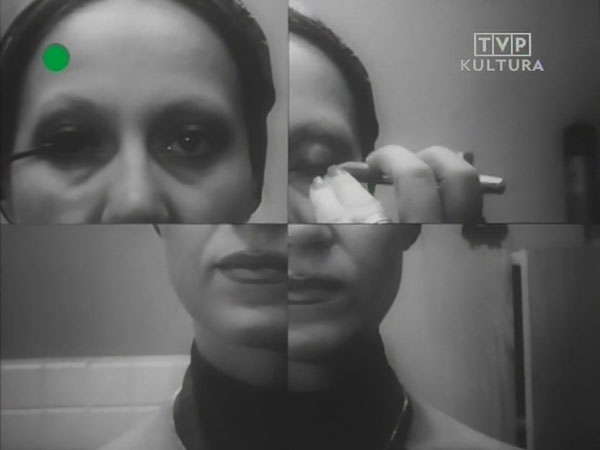Another entry for…

Initiated by Shadowplay
It’s rare for late-career shorts to even exist. Filmmakers tend to “graduate” from shorts to features, never looking back, unless called to work on some anthology film (like that one called “8” which Altman was scheduled to make after A Prairie Home Companion). Animators may be the exception, so half of the late shorts I rounded up were handmade.
–
Self Portrait (1988, Osamu Tezuka)
The few animations I’ve seen of Tezuka’s are among the most inventive I’ve seen from anybody. I’m not sure if the ten-second runtime of this short, made when he was 60, was imposed by the producer of this Animated Self-Portraits series or if that’s simply how much time Tezuka needed to make his point. Left/right/center portions of faces spin like a slot machine, and after four or five mismatches, the proper self-portrait alignment is reached – jackpot!

–
Is That All There Is? (1993, Lindsay Anderson)
Another self-portrait – the artist at age 70. Lindsay wakes up, takes a bunch of pills, puts on the news, watches some TV, has a bath, gazes at posters of his own films on the bathroom walls, goes shopping then back home, entertains writer Bernard Kops who talks about getting paid for his work, chats with some more visitors, moans about transportation with the cleaning lady, gets in a fight with his disgruntled nephew, complains about Michael Caine’s hair, discusses John Ford with a BBC producer, photocopies a newspaper review of Michael Powell’s Life in Movies that Lindsay wrote, goes through his scrapbook of past film writing, watches Ron Howard on Oprah (“I always wanted to make a movie … most importantly, I didn’t want it to be boring”), reviews his history of theater productions and film projects (he claims to have written If… 2), goes to the acupuncturist and the doctor, checks out sets and music for a new theater production, talks with his brother about gravitas, then holds a memorial service for two actresses who had appeared in his TV movie The Old Crowd fourteen years earlier. A full day. I don’t know much about Anderson – seen his bizarre Malcolm McDowell trilogy, but I only enjoyed two of them and probably understood none. This was downright enjoyable, especially considering my lack of enthusiasm for the day-in-the-life documentary format. Though I’m not saying this was a documentary – Anderson gets a writing credit, and the scene construction is subtly more intricate than could be expected from a single camera recording in real time.

–
Narcissus (1983, Norman McLaren)
McLaren’s final released film, made when he was seventy. A ballet version of the Narcissus tale, in which our hero dances against a black background with a girl, then with a guy, finally shunning them both in favor of his own reflection. Beautifully shot and danced. I didn’t notice much in the way of McLaren’s signature styles in the ballet until Narc began dancing with his own disappearing self accompanied by nintendo computer blips on the soundtrack. Probably won more awards than any other McLaren film, in part because by the 80’s there were more award shows and festivals than ever before.
Narcissus meets himself:

Dances with himself:

–
I consider “late” Buster Keaton to be the 70-ish movies he appeared in since the 1920’s, shortly after the arrival of sound when his career went to hell. So these are very late Keaton, made in the last couple years of his life when he was around seventy years old (see also: the Twilight Zone episode he did a few years earlier).
The Railrodder (1965, Gerald Potterton)
A wordless journey through desolate Canada, which must have been trying to attract humans to its empty factories, forests, harbors, fields and cities, all seen as Buster whizzes by on a motorized rail car. Not as good as a classic Keaton short, but not as bad as most state-sponsored promo pieces either, just a light amusement with some minor Keaton antics and major Canadian scenery, with possible references to The General and The Cameraman. I like when he turns the car into a duck blind, but the gag’s payoff is lame – it’s not the most well-planned or well-timed little picture. Director Gerald Potterton moved into animation, making the legendary Heavy Metal.

Buster Keaton Rides Again (1965, John Spotton)
A “making of The Railrodder” that runs almost triple the length of the feature. In fact it’s over-long, in love with its subject, providing nice quick summaries of Keaton’s past films and life story, then rambling on with the present-day footage. A coughing, gruff-voiced Keaton smokes whenever not on camera for Railrodder (he died of lung cancer the following year). He’s a stubborn bastard regarding the gags and filmmaking – it’s clear from this doc that the IMDB’s listing Buster as uncredited cowriter/director on Railrodder is accurate. My favorite gag was in the documentary, not the feature, Keaton pretending to pull a train that comes in while he’s standing near the tracks. It closes with Keaton singing “Casey Jones” in his trailer, more emotional of a picture than the fluffy promo piece it accompanies.

Film (1965, Alan Schneider)
Close-up of an eye. Protagonist, always shot from behind, staggers to his apartment, horrifying all who look upon him. Alternate blurry shots from his POV. In the apartment, he covers a mirror and removes or destroys everything that has eyes. Feels for his own pulse. Finally, Buster’s face is revealed, wearing an eyepatch and his signature hat. Close-up of an eye. I don’t understand Samuel Beckett. Could someone explain him to me?

–
Stop-motion pioneer Charley Bowers made these couple films over a decade after all his other work, and according to his IMDB bio, “no one is quite sure what he did” during that in-between decade. They’re his final films, completed the year before he became sick at age 64, unable to work until his death a few years later.
A Sleepless Night (1940, Charley Bowers)
No sound at all (who watched silent shorts in 1940?) so the DVD producer unconscionably included an audio track of projector noise. I listened to LCD Soundsystem instead, greatly improving the movie, which was otherwise slack-paced and plotless. We’ve got a stop-motion mouse family who defeats the dog of the house, drinks a bottle of milk, then eats soap and floats away on the resulting bubbles.

Wild Oysters (1941, Charley Bowers)
More technically accomplished (featuring much more camera movement) and snappier than the last one, and with the same models for the mouse family, makes me think A Sleepless Night was a test run for what he’d planned as a series of mouse adventures. Although, spoken dialogue and a song with lyrics that comment on the action aren’t the major improvement. The mouse torments a different dog and also a cat, drilling holes in the floor and pulling their tails through. Weirder is when he runs across some oysters, which link together as a chain and chase him about. Why oysters? Even Tom and Jerry never ran so low on ideas that they introduced a string of oysters. Anyway, weird movie but enjoyable.

–
The Karateguard (2005, Joseph Barbera & Spike Brandt)
The final Tom & Jerry short released to theaters, and the only one made by Barbera, aged 94 at the time, after the passing of partner William Hanna in 2001. It was a passing of the torch to Brandt, who is still making T&J cartoons. I was never a wildly enthusiastic T&J fan, so I can’t share the outrage of the IMDB reviewer who calls it “unbearably mediocre.” Jerry isn’t great at his karate lessons, so his translucent sensei encourages him to quit, instead gives him a magical gong that summons a stone-faced samurai dog, who proceeds to pummel Tom for six minutes. A good time is had by all.





































